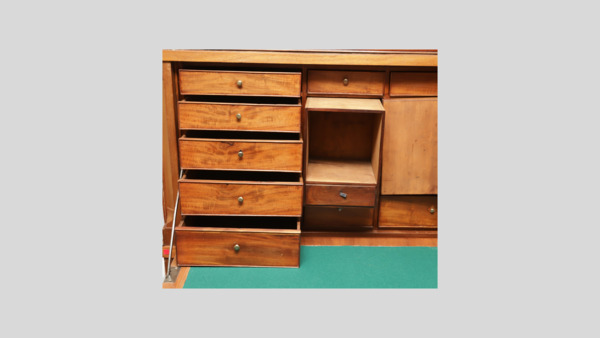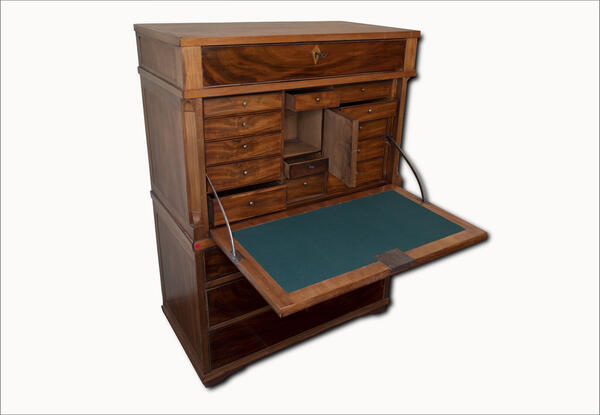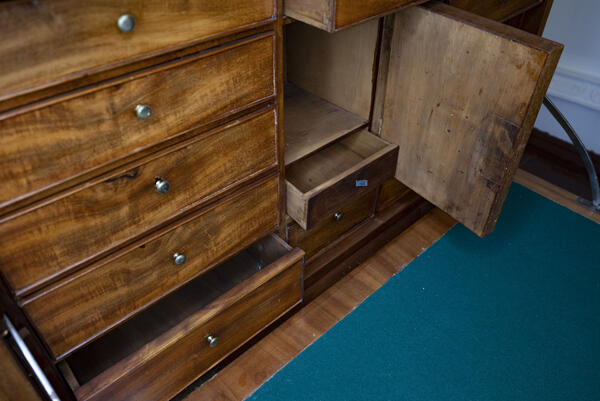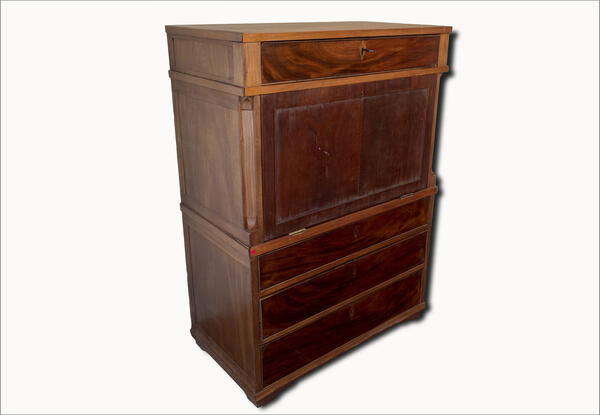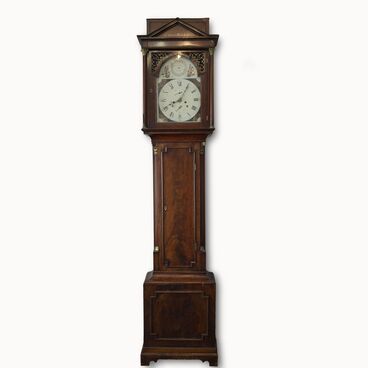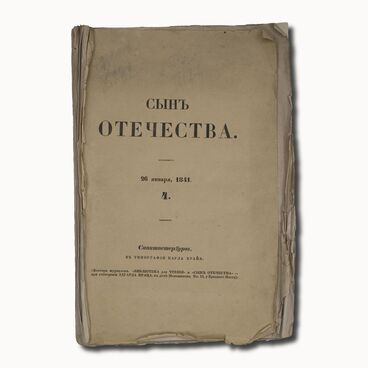The secretary desk from the collection of the Decembrists House Museum has a classic form of the so-called “Mausoleum” type that appeared in the early 19th century and belongs to a rare category of old Russian Empire (also known as “Russian Jacob”) furniture. Similar furniture pieces were made in Saint Petersburg in the period from 1830 to 1850. Nowadays, such secretary desks are a rare find in the antique market.
The secretary desk combines solid mahogany and lacquered mahogany. The item, being an antique, has been preserved quite well: the original locks, brass fittings, and other elements have survived to this day. The keyholes are highlighted with brighter diamond-shaped borders instead of the traditional applied decorative metal ones.
The strict and grand design of office furniture served for creating a working atmosphere for the owner. When the hinged desktop is folded, the secretary desk looks like a commode-dresser. As for the décor, in this position, the desk reveals only the varnished surfaces of the moving elements. Some of the façade corners are oblique in such a way that they form a decorative column-shaped chamfer.
Today, such pieces of furniture are sometimes called transformer desks. The central door easily turns into a desktop covered with a green cloth, revealing five drawers on each side, two slightly smaller pullout drawers at the top and bottom parts, and another door in the middle. This antique secretary desk is the true gem of the display called “The office of Vasily Petrovich Ivashev”. Such furniture is extremely valued by collectors and admirers of museum-level antiques.
At the turn of the 18th century, the fashion for writing bureaus came to Russia from France where a chest resting on elegant legs was first designed at the time. It had a hinged lid over the tabletop, hiding the compartments used for small items and writing sets. The writing bureaus became an indispensable part of ladies’ bedroom interiors and were used as a place for both writing and keeping letters from admirers or jewelry.
Unlike a low bureau desk, the secretary one was a tall set of drawers that also had a bookcase. The hinged or pullout desktop was used as a working space. Secretary desks with their rich finishings complemented the luxurious interiors of aristocratic houses.
The secretary desk combines solid mahogany and lacquered mahogany. The item, being an antique, has been preserved quite well: the original locks, brass fittings, and other elements have survived to this day. The keyholes are highlighted with brighter diamond-shaped borders instead of the traditional applied decorative metal ones.
The strict and grand design of office furniture served for creating a working atmosphere for the owner. When the hinged desktop is folded, the secretary desk looks like a commode-dresser. As for the décor, in this position, the desk reveals only the varnished surfaces of the moving elements. Some of the façade corners are oblique in such a way that they form a decorative column-shaped chamfer.
Today, such pieces of furniture are sometimes called transformer desks. The central door easily turns into a desktop covered with a green cloth, revealing five drawers on each side, two slightly smaller pullout drawers at the top and bottom parts, and another door in the middle. This antique secretary desk is the true gem of the display called “The office of Vasily Petrovich Ivashev”. Such furniture is extremely valued by collectors and admirers of museum-level antiques.
At the turn of the 18th century, the fashion for writing bureaus came to Russia from France where a chest resting on elegant legs was first designed at the time. It had a hinged lid over the tabletop, hiding the compartments used for small items and writing sets. The writing bureaus became an indispensable part of ladies’ bedroom interiors and were used as a place for both writing and keeping letters from admirers or jewelry.
Unlike a low bureau desk, the secretary one was a tall set of drawers that also had a bookcase. The hinged or pullout desktop was used as a working space. Secretary desks with their rich finishings complemented the luxurious interiors of aristocratic houses.

